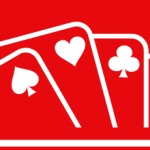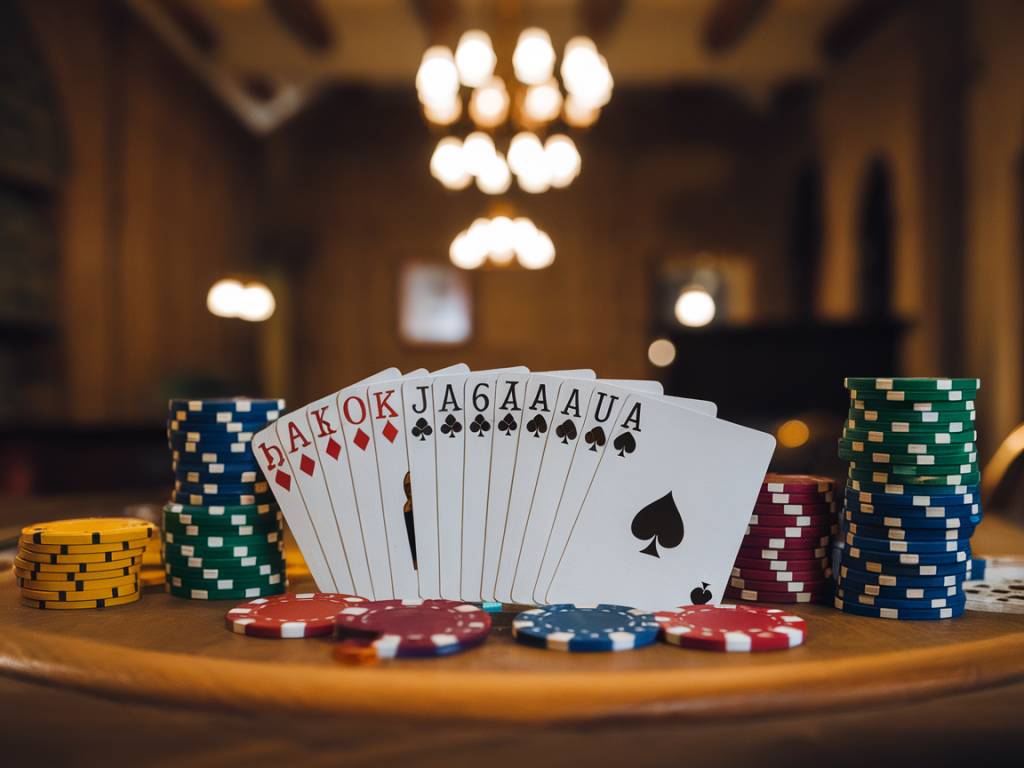Hey there, poker enthusiasts! 🌟 I’m Ramy, your guide through the fascinating world of poker and casino games. Today, we’re diving into the must-know realm of card values in poker. 🎴 By the end of this guide, you’ll have a solid grasp of how card values work and be ready to master the game. So, let’s get started!
Understanding the Basics of Poker Hands
First things first – before diving into card values, it’s essential to get a grip on the basic structure of poker hands. Poker hands consist of five cards, and the strength of your hand determines your success in the game. Here’s a quick overview of the ranking from highest to lowest:
- Royal Flush
- Straight Flush
- Four of a Kind
- Full House
- Flush
- Straight
- Three of a Kind
- Two Pair
- One Pair
- High Card
Understanding these hand rankings is crucial before you can delve deeper into the value of individual cards. Let’s break down these rankings further:
The Royal Flush 🚀
The Royal Flush is the highest possible hand in poker and is unbeatable. It consists of five consecutive cards of the same suit, from 10 to Ace (10, J, Q, K, A). Getting a Royal Flush means you’ve hit the jackpot!
Straight Flush 🌊
A Straight Flush also consists of five consecutive cards of the same suit, but not necessarily from 10 to Ace. For example, 5, 6, 7, 8, and 9 of hearts would be a Straight Flush. It’s the second-highest hand in poker.
Four of a Kind 💥
As the name suggests, Four of a Kind means you have four cards of the same rank. For instance, if you’re holding four kings (K, K, K, K), you’ve got a Four of a Kind. One remaining card that doesn’t affect the rank completes the five-card hand.
Full House 🏠
A Full House consists of three cards of one rank and two cards of another rank. For example, three queens and two 7s create a Full House (Q, Q, Q, 7, 7). This hand combines a Three of a Kind and a One Pair.
Flush 🚿
A Flush is when you have five cards of the same suit that are not in consecutive order. For example, having 2, 4, 7, 9, and K of clubs forms a Flush. If multiple players have a Flush, the hand with the highest card wins.
Straight ➡️
A Straight consists of five consecutive cards of different suits. For example, 5 of hearts, 6 of clubs, 7 of diamonds, 8 of spades, and 9 of hearts create a Straight. It’s a significant hand, ranking right below a Flush.
Three of a Kind 🎱
Three of a Kind means you have three cards of the same rank, such as three 10s (10, 10, 10). The other two cards do not affect the rank of this hand.
Two Pair ✌️
Two Pair is when you have two pairs of cards of the same rank. For example, two 8s and two Jacks (8, 8, J, J) constitute a Two Pair. The fifth card plays no role in the rank.
One Pair 👥
One Pair means you have two cards of the same rank, like two 4s (4, 4). The remaining three cards are of different ranks. While not as strong as other hands, One Pair is still better than just having a High Card.
High Card 🃏
If no one can form any of the hands listed above, the hand with the highest single card wins. For example, if your highest card is an Ace, you have a High Card hand known as an Ace-high.
Card Values and Their Impact
Now that you know the different types of poker hands, it’s time to delve into the card values and how they impact the game. In standard poker, the values of the cards are ranked as follows:
- Ace (A)
- King (K)
- Queen (Q)
- Jack (J)
- 10, 9, 8, 7, 6, 5, 4, 3, and 2
In some rules, the Ace can also serve as the lowest-value card, forming a low Straight (A, 2, 3, 4, 5). It’s essential to understand this dual role of the Ace to make strategic decisions during gameplay.
Suits and Their Values
In poker, the suits (hearts, diamonds, clubs, and spades) don’t influence the hand’s value. However, if two straights, flushes, or other hands compare, the highest-ranked suits can serve as a tie-breaker in some home rules. Typically, spades are the highest-ranked suit, followed by hearts, diamonds, and clubs. But in most mainstream poker games, suits are considered equal.
Strategic Use of Card Values🧠
Understanding card values isn’t just about knowing which hands beat others. It’s also about using this knowledge strategically to enhance your gameplay. Here are a few tips:
Evaluate Starting Hands
The value of your starting hand significantly impacts your odds. Premium hands like AA, KK, and QQ give you a strong starting point, while lower hands like 7-2 offsuit should usually be folded.
Bluffing and Semi-Bluffing
Knowing that your current hand isn’t strong, but might become strong by the river, can be used for bluffing. For instance, holding suited connectors (like 7-8 of hearts) allows you to semi-bluff since you have potential for both a straight and a flush.
Reading Opponents
Understanding how other players might evaluate their hands is crucial. If you can deduce that an opponent might be holding a high card but you have two pairs, you can confidently raise or call.
Helpful Tools and Resources 🎩
To further your poker journey, there are several tools and resources that can help:
- Poker Strategy Books: Classic and modern books can provide deep insights.
- Online Poker Calculators: Use these tools to understand odds and probabilities.
- Training Videos: Platforms like YouTube and poker training sites offer valuable content.
- Poker Forums: Engaging with communities can give you new perspectives and strategies.
Final Thoughts 💭
Mastering poker is a long but rewarding journey. Understanding the values of cards and the ranking of hands is the foundation upon which successful strategies are built. By knowing these basics and combining them with practice and additional learning resources, you’ll be well on your way to becoming a formidable poker player. Good luck at the tables, and may the cards be ever in your favor! 🎲

